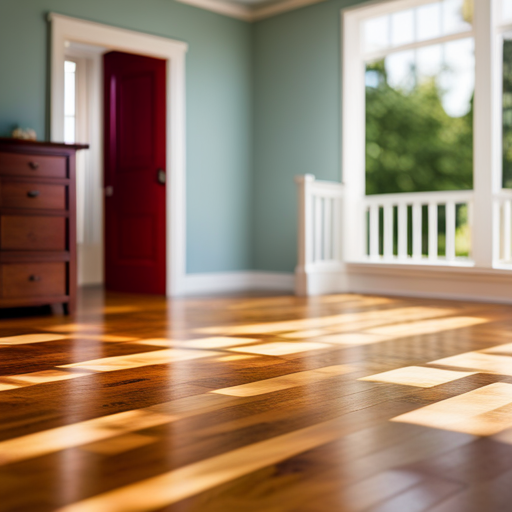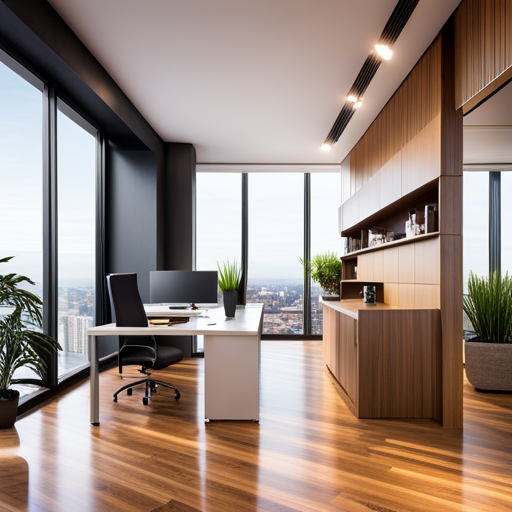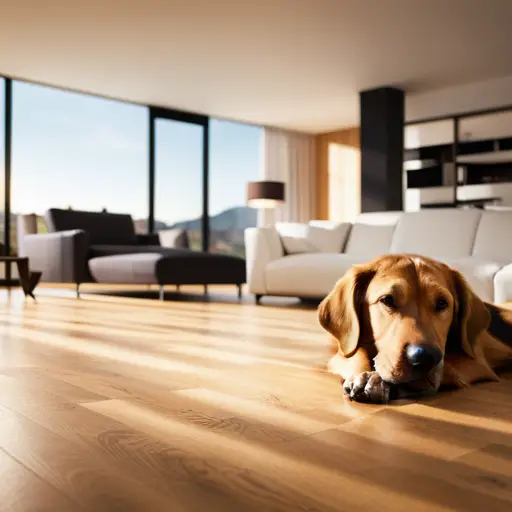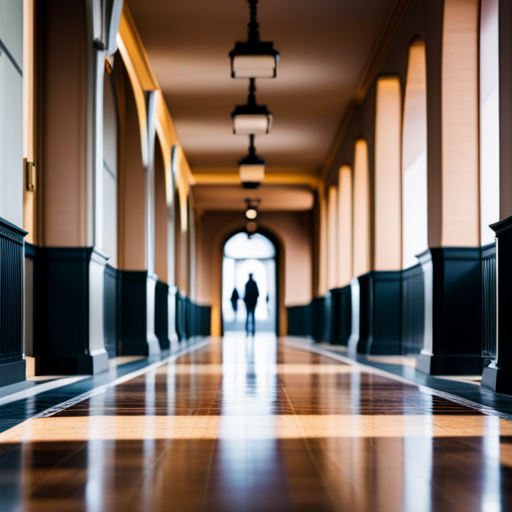Flooring Renovations for Historic Homes

Preserving the timeless elegance of historic homes while integrating modern functionality is a delicate balance. Flooring renovations for these cherished properties demand careful consideration of materials, structural integrity, and historical accuracy.
From restoring original hardwood floors to selecting sustainable and durable options, the task requires a blend of expertise and reverence.
This article explores the intricacies of flooring renovations for historic homes, offering guidance on material selection, maintenance, and preserving the unique charm of each period.
Preserving Original Hardwood Floors
Preservation of original hardwood floors is a crucial aspect of renovating historic homes. When undertaking renovations in such properties, it is essential to employ restoration techniques that prioritize historical accuracy. This involves carefully assessing the condition of the existing hardwood floors and determining the most appropriate methods for preserving their original charm while ensuring they meet modern standards of functionality.
Restoration techniques for original hardwood floors in historic homes often involve delicate processes such as repairing damaged sections, sanding to remove surface imperfections, and refinishing to enhance the wood’s natural beauty. It is crucial to use methods that align with the era in which the home was constructed, maintaining historical accuracy. This might include using specific types of wood, finishes, and installation patterns that were prevalent during the home’s initial construction period.
Additionally, historical accuracy in preserving original hardwood floors extends to maintaining the architectural integrity of the space. This means ensuring that any restoration work complements the overall design and style of the home, seamlessly blending the old with the new.
Sustainable and Durable Flooring Options
When renovating historic homes, it’s essential to consider sustainable and durable flooring options that align with the property’s character and longevity.
Eco-friendly hardwood alternatives, such as reclaimed materials, offer a timeless appeal while reducing environmental impact.
Additionally, materials like cork and bamboo provide natural durability and resilience, making them ideal choices for high-traffic areas in historic homes.
Eco-Friendly Hardwood Alternatives
An array of sustainable and durable flooring options are available as eco-friendly alternatives to traditional hardwood for historic home renovations.
-
Bamboo flooring
-
Bamboo is a rapidly renewable resource, making it an eco-friendly alternative to traditional hardwood. It offers the durability and beauty of hardwood while being more sustainable.
-
Recycled tile options
-
Recycled tiles, made from materials such as glass, porcelain, or ceramic, provide an eco-friendly flooring option. These tiles are durable, easy to maintain, and come in a variety of styles, making them suitable for historic home renovations.
These eco-friendly alternatives not only contribute to environmental sustainability but also offer durability and aesthetic appeal, making them ideal choices for preserving the charm of historic homes.
Long-Lasting Reclaimed Materials
Sustainable and durable flooring options, such as reclaimed wood and salvaged tiles, continue the theme of eco-friendly materials for historic home renovations. Reclaimed wood offers a unique blend of character and sustainability, perfect for maintaining the historic charm of a home while reducing environmental impact. Stone restoration and antique tile options provide period-specific finishes that contribute to historic preservation efforts. These materials not only possess a timeless appeal but also offer structural integrity, ensuring long-lasting results. Here is a breakdown of these long-lasting reclaimed materials:
| Material | Benefits |
|---|---|
| Reclaimed Wood | Unique character, sustainability |
| Salvaged Tiles | Period-specific finishes |
| Stone Restoration | Historic preservation, durability |
| Antique Tile | Timeless appeal, structural integrity |
Cork and Bamboo Benefits
Cork and bamboo, both sustainable and durable flooring options, offer additional benefits for historic home renovations, complementing the long-lasting appeal of reclaimed materials such as wood, tiles, and stone. When considering these options, it’s important to note that:
- Installation Techniques and Acoustic Properties
Both cork and bamboo can be installed using floating floor techniques, making them suitable for various subfloor types and reducing installation time and costs. Additionally, their natural properties provide excellent sound insulation, making them ideal for historic homes where noise reduction is crucial.
- Environmental Impact and Moisture Resistance
Cork and bamboo are renewable resources, making them environmentally friendly choices. Furthermore, their natural resistance to moisture makes them suitable for historic homes, helping to prevent potential damage from humidity and moisture. These factors make cork and bamboo highly advantageous for flooring in historic homes.
Integrating Modern Functionality With Historic Charm
Integrating modern functionality with historic charm requires a thoughtful balance of preserving original features while incorporating contemporary conveniences. When renovating historic homes, the challenges lie in maintaining the property’s historic character while ensuring it meets the modern homeowner’s needs. This delicate design balance necessitates a nuanced approach that respects the historical significance of the property while integrating modern convenience.
Preserving the historic character of a home often involves retaining original architectural elements, such as flooring, moldings, and fixtures. However, these features may not always align with modern lifestyle requirements. In such cases, integrating modern functionality while preserving historic charm becomes crucial. This may involve discreetly incorporating modern amenities, such as underfloor heating, into the existing flooring without compromising its historical integrity.
Additionally, advancements in flooring materials offer opportunities to seamlessly blend historic aesthetics with modern practicality. For instance, reclaimed wood or salvaged tiles can be used to maintain the home’s historic appeal while ensuring durability and ease of maintenance. By skillfully integrating modern functionality, homeowners can enjoy the convenience of contemporary living without sacrificing the timeless allure of their historic abode.
Choosing Flooring Materials for Different Historic Periods
When renovating historic homes, it’s essential to consider the flooring materials that align with different historic periods. Understanding the period-specific flooring options, the authenticity and material choices, and incorporating modern updates for preservation are crucial aspects to explore.
Period-Specific Flooring Options
During the restoration of a historic home, selecting flooring materials appropriate for the specific historic period is essential for maintaining authenticity and preserving the home’s original character.
This involves choosing flooring options that were commonly used during the era the home represents.
For instance, for homes reflecting the early 20th century, custom tile would be a suitable choice, as it was a popular flooring option during that period.
Additionally, vintage linoleum, with its classic patterns and durability, would be an ideal option for homes representing the mid-20th century.
Authenticity and Material Choices
For flooring renovations in historic homes, it is crucial to select materials that are authentic to the specific historic period and reflect the original style of the home. Material authenticity is paramount to heritage preservation and design integration. When choosing flooring materials for different historic periods, it’s important to consider the aesthetic appeal and how well the materials will blend with the overall design of the home. Here’s a table to help you select flooring materials that are authentic to different historic periods:
| Historic Period | Authentic Flooring Materials | Aesthetic Appeal |
|---|---|---|
| Victorian Era | Hardwood, Parquet, Linoleum | Elegant, Ornate |
| Colonial Period | Wide Plank Wood, Brick | Rustic, Charming |
| Art Deco | Terrazzo, Marble, Cork | Stylish, Luxurious |
Choosing materials that align with the historical context of the home will ensure a cohesive and authentic look while preserving its heritage.
Modern Updates for Preservation
To ensure the preservation of historic homes while incorporating modern updates, selecting flooring materials authentic to different historic periods is essential for maintaining the heritage and design integrity of the property. This approach allows for the seamless blending of historic preservation with contemporary needs.
When choosing flooring materials for different historic periods, it’s crucial to consider the following:
-
Authenticity: Select flooring materials that were commonly used during the specific historic period of the home. This helps in preserving the original aesthetics and charm of the property.
-
Reclaimed wood: For homes from the Colonial and Victorian eras, reclaimed wood flooring offers an authentic touch while being environmentally friendly.
-
Modern Updates: Integrate modern technologies and installation methods while preserving the historic appeal of the flooring materials.
Addressing Subflooring and Structural Considerations
In historic home flooring renovations, careful attention to the subflooring and structural considerations is essential for preserving the integrity of the original design and ensuring the long-term stability of the new flooring.
Subfloor preparation is crucial in historic homes, as it often involves addressing uneven surfaces and ensuring that the subfloor can adequately support the new flooring materials.
Structural integrity must also be evaluated to ensure that the existing subfloor can withstand the weight and traffic of modern flooring materials.
Additionally, moisture mitigation is paramount in historic homes, as older structures may be more susceptible to moisture-related issues that can compromise the new flooring. Implementing moisture barriers and ventilation systems can help safeguard the integrity of the subfloor and the new flooring materials.
Furthermore, historic preservation guidelines and regulations must be adhered to during subflooring renovations to maintain the authenticity and character of the original design.
Maintenance and Care for Historic Flooring
Proper maintenance and care for historic flooring is essential for preserving its original beauty and ensuring its longevity. When it comes to historic flooring, using the right restoration techniques and antique care is crucial.
To maintain the integrity of historic flooring, consider the following:
-
Regular Cleaning:
-
Use gentle, non-abrasive cleaning products suitable for historic flooring materials.
-
Avoid harsh chemicals that can damage the flooring’s original finish.
-
Professional Restoration:
-
Engage professional restorers experienced in working with historic flooring.
-
Ensure that any restoration work is in line with preservation guidelines for historic homes.
Frequently Asked Questions
Can I Use Reclaimed Wood From Other Historic Homes for My Flooring Renovation?
Yes, reclaimed wood from other historic homes can be used for flooring renovations, promoting sustainability and preserving the historical character of the property. Consider underlayment options to ensure proper installation and longevity of the reclaimed wood flooring.
Are There Any Eco-Friendly Underlayment Options for My Historic Hardwood Floors?
When considering underlayment options for historic hardwood floors, it’s important to prioritize eco-friendly materials. From natural rubber to cork, there are several sustainable underlayment options that provide both environmental benefits and effective support for your flooring.
How Can I Incorporate Radiant Heating Into My Historic Home Without Damaging the Original Features?
Incorporating radiant heating into a historic home without damaging original features involves preservation techniques and modern heating solutions. Careful consideration of originality is essential, while leveraging modern technology to ensure the installation is seamless and minimally invasive.
What Flooring Options Are Best for Homes From the Victorian Era Versus the Craftsman Era?
When considering flooring options for Victorian versus Craftsman era homes, it’s crucial to prioritize durability and maintenance of historic home aesthetics. Understanding historic home flooring trends is essential to ensure the preservation of original features.
Is It Possible to Install New Flooring Without Compromising the Structural Integrity of My Historic Home?
Preserving the structural integrity of a historic home while installing modern flooring is possible with careful planning and expertise. It involves assessing the existing structure, utilizing appropriate materials, and ensuring the preservation of the home’s authenticity.
Conclusion
In conclusion, preserving and renovating the flooring of historic homes requires a delicate balance between maintaining the original charm and integrating modern functionality.
By choosing sustainable and durable flooring options and addressing subflooring and structural considerations, homeowners can ensure the longevity of their historic floors.
Additionally, understanding the appropriate flooring materials for different historic periods and implementing proper maintenance and care practices will contribute to the overall preservation of these timeless homes.

Rubin Everest, a seasoned expert in the world of flooring, brings a wealth of knowledge and passion to the surface. As the mind behind ebbow.com, Rubin is dedicated to sharing insights on the latest trends, innovative solutions, and expert advice in the realm of flooring. Whether you’re seeking practical tips for installation or design inspiration, Rubin Everest is your go-to source for all things flooring-related, making your journey to the perfect floor an informed and enjoyable experience.





